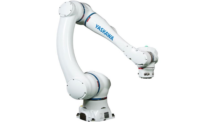Editor’s Note
20/20 Vision

Packaging trends are already coming out for 2020. It makes sense, since they stem from the previous year’s designs, shifts in consumer demand and what the market is working on in the corporate realm.
This year has seen growth of global trends impacting our environment — packaging waste and ocean plastic and greenhouse gas emissions — as well as the overall need to do better with both materials and weighty e-commerce packaging.
The needs will not wane this year, as there is work to do still. Yet, consumers and many brands do not understand the behind-the-scenes changes needed to make these things happen: upgrading technology, training on newer and automated equipment, constant format changes as pack size variety is needed for e-commerce, single-serve and family size containers — and quick changeovers.
So how is the machinery world handling these changes? Many are now offering manual, semi-automated and automated machinery as part of a packaging line group. And while some have gone full-on automation, others haven’t yet taken a dip in the automated water.
The good news (sort of) is, the packaging space isn’t 100% there yet. Many companies claim to want the new machinery but are not always ready for it. Once you train your team to work on already installed equipment, there are new, more advanced models ready to take their place.
Automation has many benefits, including time saving, cost saving (less manpower) and increased production. However it isn’t the only change for the mighty machine.
In a recent blog posted on our website, Mark Howard with EU Automation shares how small- to medium-sized manufacturers can prepare for a manufacturing resurgence, driven by reshoring and regulatory changes.
He goes on to explain that China, for example, is the world’s largest market for industrial robotics, with sales close to the combined volume of Europe and both North and South America in 2016. The United States is not averse to automation, but use has been limited to large-scale facilities. As the manufacturing renaissance begins, this needs to change.
Here is a simple way to view it: A manufacturer of peripheral products for automotive production, such as electrical control and security products, may already use a SCARA robot to assemble circuit boards. However, the facility may not have an adequate programmable logic controller (PLC) to control the robot and any associated automation, such as a conveyor, in the most effective manner.
So while we look at consumer choices, packaging design and material trends, we can’t forget the equipment behind it. In this issue, you will find 7 tips for choosing sanitary equipment, cartoning machinery and aseptic packaging designs. Happy reading!
KRISTEN KAZARIAN
Looking for a reprint of this article?
From high-res PDFs to custom plaques, order your copy today!






